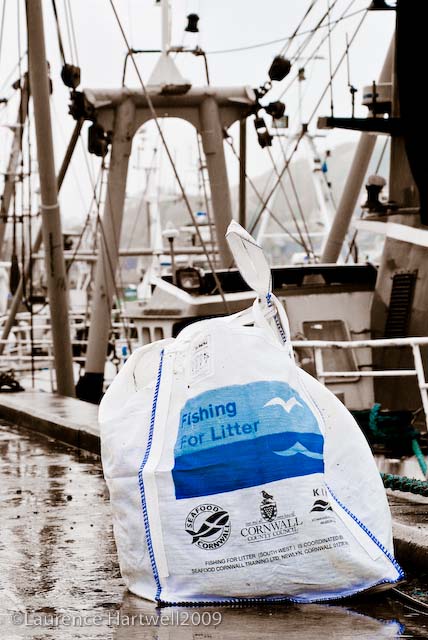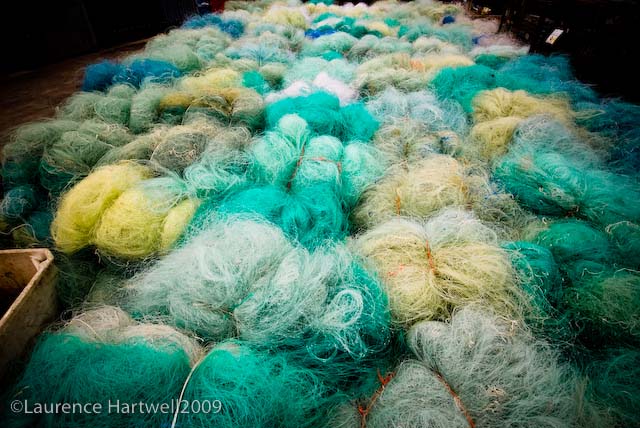There is no doubting the cause of divers in retrieving nets lost on wrecks and rough ground - nor publicising the work that they do - but using the term 'ghost fishing' suggests that these lost nets - be they trawls, gill nets or pots continue to fish in the same way they do when first deployed.
Most of the gear in the videos is heavily covered in algae that in many cases has completely obliterated the net. Gill nets are made of fine, single strand mono-filament translucent nylon and rely on their near invisibility underwater to catch fish - when covered in algae the fish simply avoid them. Trawl nets need to move through the water to catch fish - when lost over wrecks they provide a haven for small fish, crustaceans, molluscs and seaweed or algae - they may make a wreck more dangerous if it is dived on of course. Pots rely on fresh bait to attract crab and lobster into them - it would be every shellfishermen's dream to have post that caught crabs and lobster without bait as bait is the biggest single expense on a shellfishermen's end of year accounts!
No Fishermen likes to lose gear on wrecks or rough ground - it costs time, a lot of money and can in some circumstances be extremely dangerous - but it is a hazard of the job. Modern navigation and marine electronics technology has helped reduce the amount of gear lost through skippers being able to place their gear more accurately then ever before - and chart plotting software means they can be sure of recording and repeating fishing operations more safely.
Newlyn and other ports have championed the recycling of nets through the Fishing for Litter campaign...
On a really positive note, locally a new start-up company FishyFilaments is running a crowdfunding campaign to develop the recycling of nylon fishing like the above into 3D printing filaments!
Here are some of the campaigns currently being fought under the unhelpful banner, 'Ghost Fishing':
In May 2016, the dive team of the Dutch Ghost Fishing Foundation helped a German Greenpeace campaign, with the goal of drawing attention to the sizable problem of ghost nets in the North Sea. After almost two weeks of ideal weather conditions—with bizarrely bad visibility underwater—the deck of the Arctic Sunrise boasted five enormous BIG BAGs (the Swedish eco-friendly garbage bag brand) full of nets and fishing lines. A considerable catch, but there is plenty more work waiting at the bottom of the German North Sea.
The full article appeared in X-RAY MAG
The rest of the Greenpeace campaign was spent on alternating dives to two unknown wrecks. One of the wrecks had clearly recognizable shapes, the other was mostly covered in sand, having been torn apart quite badly. But both suffered from a significant amount of “decoration”; they were covered with large trawler nets, but also a lot of trammel nets. We were diving not far from Denmark, a country with a sizable gill netting fleet—a fact that was clearly evidenced underwater.
After ten days of diving, the deck of the Greenpeace campaign vessel boasted five BIG BAGs filled to the brim with netting. Greenpeace oceans campaign leader, Thilo Maak, who dived on nearly every dive, was shocked, himself. He knew he was using this clean-up campaign to draw attention to a sizable problem, but to see the actual size of the problem up close like this was a real eye-opener, either way. And, realistically speaking, we were not even done yet. One of the wrecks still had a large piece of netting on it. We did not even have enough time left on this particular trip to cut it loose one bit at a time. And to think of the dozens of other wrecks out there on the Sylter outer reef yet to be cleaned? “We’ll go again next year,” said Maak. “We still have a lot of work to do.”
This video highlights some of the divers' work in recent years.


